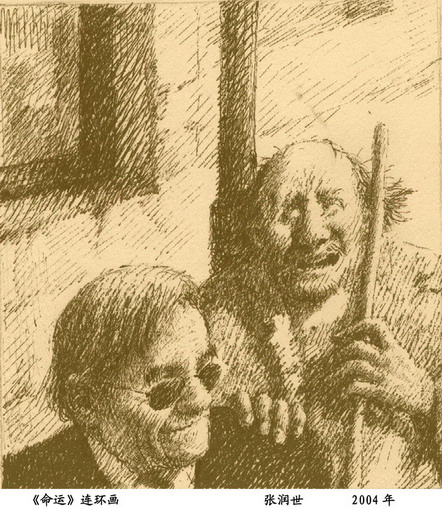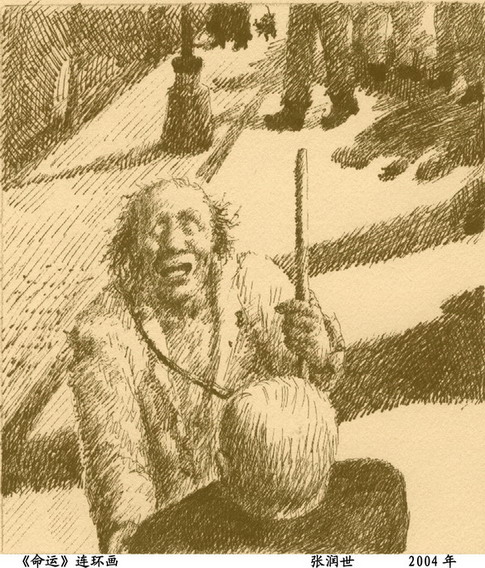Colorful Imagination by Yi Ying
One characteristic of Zhang Runshi’s painting is that there is nothing gimmicky about it; if we look at his earlier woodblock prints and pictorials, their structure and composition are both realistic; the subjects are cumbersome just as they would be in real life, the background has not been touched-up yet appears to be illusory, as though being seen by weary eyes. From an artistic perspective, there is no truth perse, even the most realistic narrative is based on personal experience. In the weighing of reality and experience, the result often decides the degree of alternating reality, or the ratio of subjectivity to objectivity.
Zhang Runshi’s paintings stand out from the crowd. He would find it difficult if you asked him to produce something rational or in accord with certain principles. This characteristic is reflected in his prints: print-making, a technical and process-oriented art, becomes rather sentimental in his hands. Even though he may have intended to follow certain principles, Zhang Runshi’s prints can be summed up with the word “Clumsy”. It is not a clumsiness that comes from techniques, instead, it is a characteristic of his composition. “Clumsiness” and “Wildness” are, actually, rare attributes in contemporary art. Van Gogh, Rousseau, and Chagall all painted in this way. Van Gogh’s earlier works contained few colors, but their clumsiness was powerful. Zhang Runshi’s clumsiness is somewhat limited by principles, he is naturally rather than intentionally clumsy. His compositions are almost excessively backward; they are show intentional design, but naïve perspective and original representation.
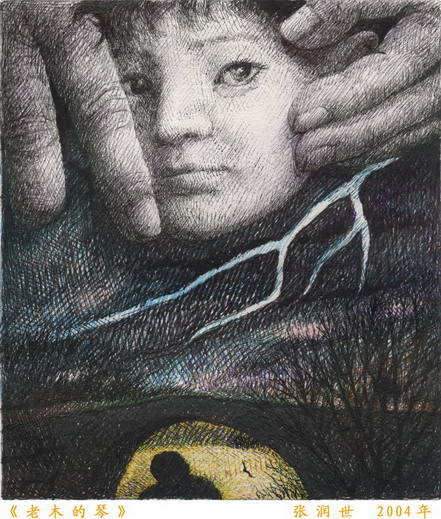
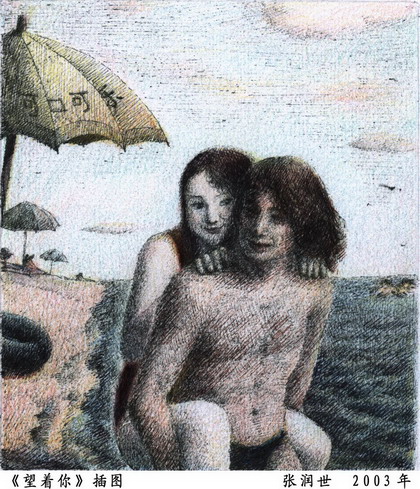
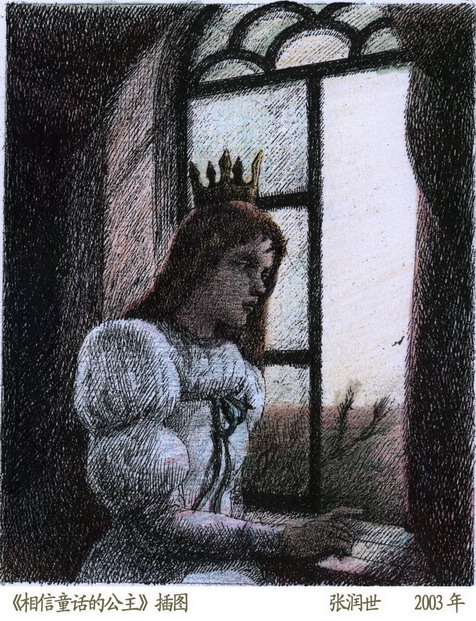
The excellence of a landscape painting depends on various factors: completeness in composition, poetry in scenery, harmony in color, the formation of figures, etc. a poor landscape painting lacks these features. Similarly, a unique landscape painting should break through these factors. Zhang Runshi’s paintings reveal this unique quality, but they are also rather close to the edge of being “bad paintings”. “Dawn at the Back of the East Village” is this kind of work. The composition is unclear, yet one can somehow identify a scene, trees, houses, a small path, a pond, even horses and people—all of which are not what he wanted to represent. Rough brushwork sweeps over the image with mixed colors, the co-existence of red and green seems extremely unharmonious, and a heavy black is also mixed in. what is Zhang Runshi trying to present? It is not the beauty of the countryside, nor is it the tranquility of dawn or eye pleasing scenery. Everything in this image is a medium for sentiment and color, is it a reflection of the self through such medium?
It is obvious that Zhang Runshi’s colors have not been inspired by mass culture even in his prints we can see that the focus is on his direct experience, because they do not follow the formulaic principles of composition. Figures in his oil paintings are the same, simple and concise, naïve and natural; he is not interested in expressing a particular scene or event, but in expressing the painting itself. Actually, Zhang Runshi’s works bring us back to early contemporary styles, like the works of Van Gogh and Gauguin. They seem to be rebelling against the oppression of tradition. Zhang Runshi’s paintings are thus mixed with post-modernism, a combination of linguistic expression from mass culture with original sentimental personal experience. Perhaps this is a coincidence and he has no intention to prove anything to us; perhaps this is his direct response to mass culture. However, he has blended this response with personal experience, and moreover, he represents a self that is original, naïve, and genuine. Every piece of art can point to something, no matter how we enjoy the aesthetic in our shared experience of contemporary culture. He distinguishes himself by not choosing a style that has been duplicated or packaged. Rather, he shows his personal existence. Even though these simple yet illusory colors are his own creation, they are colors we share; even though they are his creations, they are also experiences we have collectively forgotten and submerged. Indeed some cannot be recovered. But, looking at Zhang Runshi’s painting, he has preserved many.

